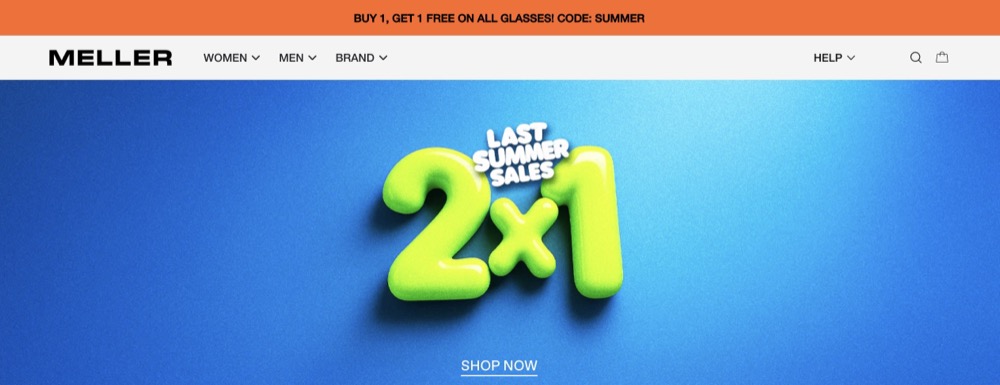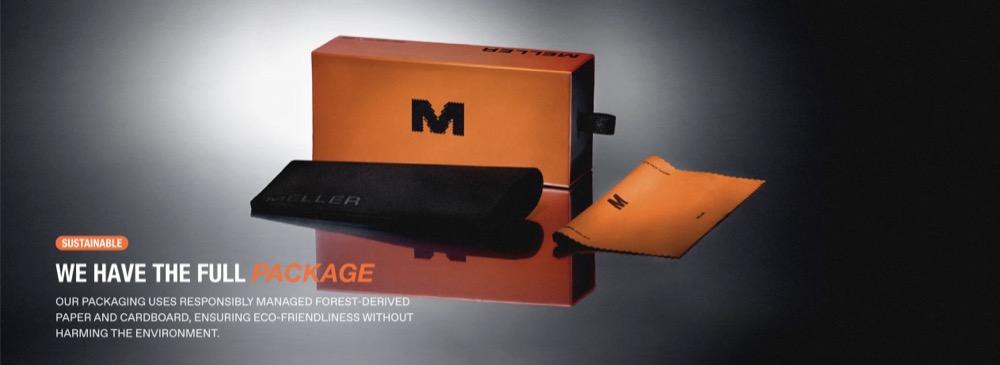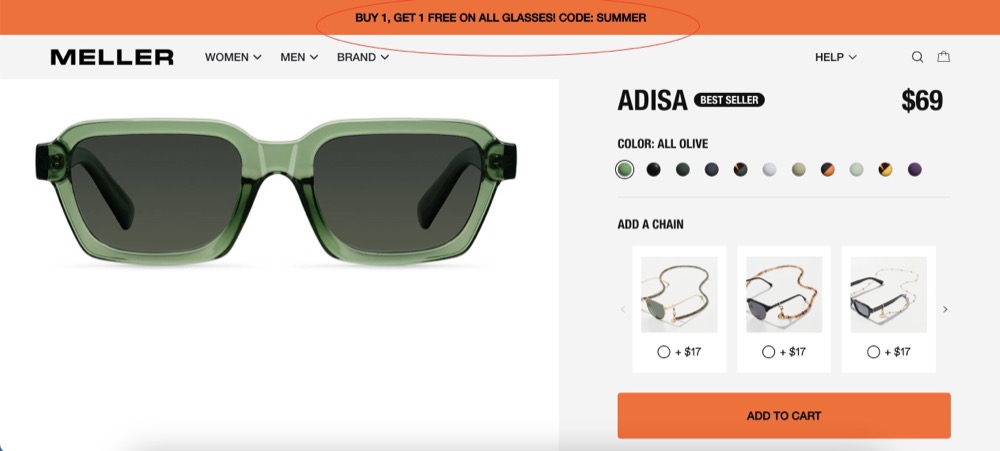Most Shopify store owners think they need flashy designs and complex funnels to hit big numbers. But what if I told you there’s a sunglasses brand making sales monthly with an “extremely simple” website?
The store is called Meler, and they’re crushing it in one of the most saturated markets imaginable. While thousands of sunglasses brands fight for attention, Meler quietly built a multi-million dollar operation using tactics any Shopify owner can implement.
Here’s exactly what they’re doing that you can steal for your own store.
Keep your design stupidly simple
Meler’s landing page breaks every “best practice” you’ve probably read about. No fancy animations, no overwhelming product galleries, no complex navigation menus. Just clean, simple design that gets out of the way.
This isn’t laziness. It’s strategic. When customers aren’t distracted by flashy elements, they focus on what matters: your products and your offer. Simple converts better than complex, especially when you’re spending money on ads to drive traffic.

Use Trustpilot instead of basic review apps
Most Shopify stores use generic review apps that customers ignore. Meler uses Trustpilot, and there’s a smart reason why. Trustpilot has stricter regulations than typical Shopify review systems, making their reviews feel more legitimate to customers.
When someone sees a Trustpilot review, they unconsciously think “this must be real because Trustpilot wouldn’t allow fake reviews.” Whether that’s completely accurate doesn’t matter. What matters is customer perception, and Trustpilot carries more authority than generic review widgets.

Add a “how to style” section for products
This is brilliant and works for way more than just fashion. Meler includes a “how to style them” tab that shows customers how to actually use their sunglasses in different situations.
Think about your own products.
- Can you show customers different ways to use them?
- Different occasions to wear them?
- Different problems they solve?
This type of content doesn’t just educate. It increases perceived value and gives customers more reasons to buy.
You could create this content by hiring influencers, making it yourself, or even reposting user-generated content from social media.

Show exactly what customers will receive
Meler shows customers the actual packaging they’ll receive, down to the cardboard box. It’s not fancy packaging, just a normal box, but they show it anyway.
This transparency builds trust. When customers know exactly what to expect, they’re more likely to complete their purchase. Mystery breeds hesitation, and hesitation kills conversions. To combat this, you can create urgency with scarcity tactics that encourage immediate action.

Write like a human, not a corporation
Instead of generic newsletter signup copy like “Get 10% off your first order,” Meler writes: “0% spam 100% meler we love a clean mail inbox so we only send our subscribers important things promotions you can miss or news that will blow your mind.“
This sounds like something a friend would say, not a faceless brand. It acknowledges that most email lists are spam-heavy and positions theirs as different. It creates curiosity about what “news that will blow your mind” might be.
Look at your current copy.
Does it sound like it came from a corporate marketing department, or does it sound like something you’d actually say to a friend?
Rewrite everything that sounds too formal or salesy.

Delicate offer placement
When you spend time on their website, you don’t counter lots of popups, promotion boxs, etc. They just nicely put a sticky popping banner at the top of website. Some websites are flushed with sales offers, it can cause frustration to customers.

Build your product catalog strategically
Meler doesn’t just sell sunglasses. They sell sunglass accessories like chains and cases. These complementary products are genius because they increase average order value and customer lifetime value with minimal additional marketing effort.
Look at your main product. What accessories, add-ons, or complementary items could you offer? A phone case brand could sell screen protectors and cleaning cloths. A fitness brand could sell water bottles and workout towels.
Product variety becomes a competitive advantage, especially if you’re starting small. You can continuously add new products to keep customers coming back and increase your revenue per customer.
The real lesson here
Meler proves that execution beats innovation every time. They’re not doing anything revolutionary. They’re just doing the basics extremely well in a crowded market.
You don’t need to reinvent e-commerce to build a successful Shopify store. You need to understand your customers, present your products clearly, build trust through transparency, and consistently optimize what’s working.
These strategies work because they focus on reducing customer friction and increasing trust, two critical factors in e-commerce conversions.
Every single one of these tactics can be implemented on your Shopify store this week.





